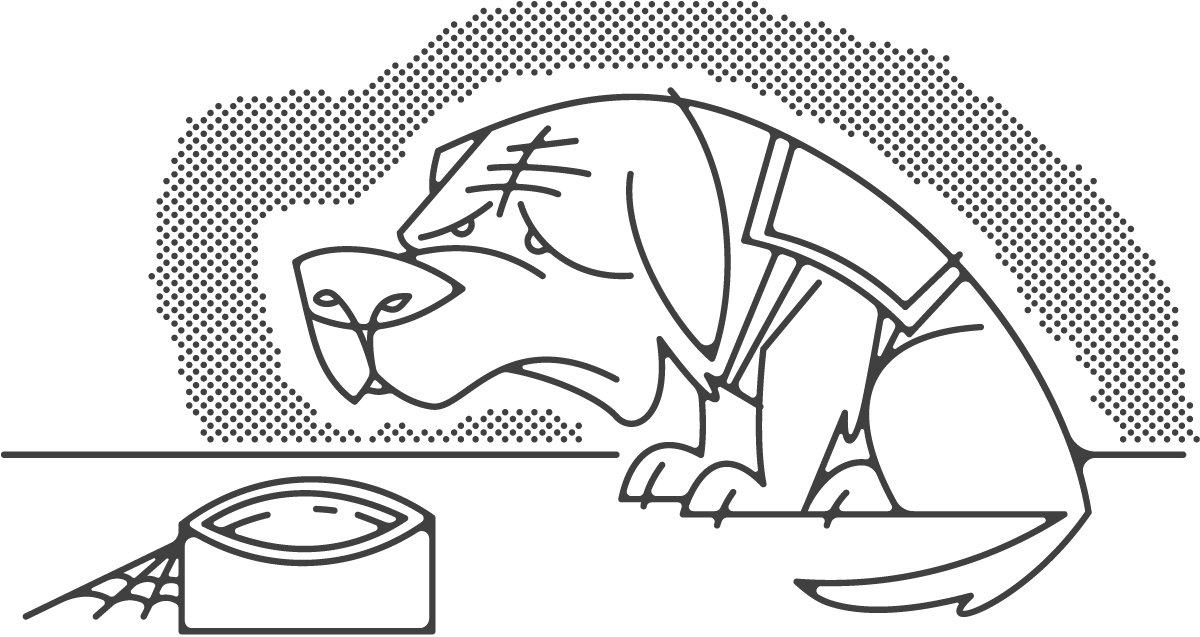A logo is one of the main visual identifiers of a brand. It stands as a visual beacon. It represents who you are, what you do, and what value you bring to the audience you engage with. It has a purpose and wants to do its job effectively. The last thing the logo wants is to be abused. Yet, so many small businesses neglect or abuse their logo — and in effect, do damage to their brand and business.
Let’s say that you decide that you are going to acquire a guide dog or a service dog. You properly invest in that dog so that you can get the best service out of the dog. You acquire one of the top breeds for that service and probably from a breeder, you invest in proper training for the dog and you care for its wellness since it has a purpose and you want to maximize your investment. The last thing you would think of doing is going through all of that trouble only to just chain up the dog, neglect its care, barely feed it, or worse, abuse it physically.
The same mentality stands when a small business has the common sense to have a properly strategized and developed logo for that brand — only to ignore, abuse, or neglect that very logo that has a job or service to provide (for the brand). All too often, small businesses that depend on themselves to manage their brand’s marketing will also depend on themselves to dictate how the logo is used. And all too often, the same mistakes are made that take a potentially great logo and commit acts of visual sabotage to it.

There is No Such Thing as Logo Yoga.
The most common form of logo abuse is forcing it to fit into a visual space that doesn’t properly accommodate its proportions. When this happens, the common solution is to either stretch the logo or compress the logo so that it fits. However, the logo isn’t in a yoga class and doesn’t need to be limber and stretched for better wellness. A lot of time and thought (hopefully) went into the logo’s design with attention to the specific typeface and letterforms of the logo as well as the shapes, spaces, and the overall visual aesthetic of it. To help maintain the integrity for which your logo was designed, it should be displayed in the exact proportions that it was created. It should not be adjusted to fit any given space. If anything, the space should be adjusted to accommodate your logo’s proper proportions or the size of your logo should be adjusted to maintain those proportions. Failing to do so reveals a less than professional approach to design that can be carried over to audience’s overall (negative) impression of your brand. If you don’t care about your logo, how much do you care about your service, or the quality of your product?
The Logo Needs to Breathe.
Another common form of abuse to a logo is putting other design elements too close in proximity to the logo. Think of it as visually crowding a logo. A logo is best when it has plenty of breathing space and elbow room. The increased negative space around the logo is a powerful element in design and allows the logo to gain more visual attention and stand out to the eye. When it is crammed in tight with other text, images, etc. around, it lacks the ability to service the brand as that visual beacon. It needs to stand out to have the most power for the brand it serves. It wants to take Center Stage. The logo needs room to run and room to showcase itself to the audience. It wants to be free. Let it be free.
Additional Effects have a Negative Effect.
With the ease of use of most software that handles graphics and that are readily available to anyone, logos seem to fall victim to a number of effects that they were never meant to have applied. Effects like Glow, Outline, the dreaded Drop Shadow and other simple effects to add to a graphic image. These have no place being added to a logo and a well-cared for logo means having one that maintains its visual integrity. A well-developed logo or wordmark is one that is scalable and reproducible in a number of situations, all the while remaining the same across all the brand touchpoints. If a white glow is added to a logo so it stands out more against a dark background, or a drop shadow is needed to have it be more visible, the logo was poorly conceived or has strict brand guidelines that include not putting it against certain background to begin with. In general, a well-conceived identity system for a brand will account for various scenarios and have options already at the ready for your logo.
A logo is one of the main and most effective connections a brand can have with its audience. It has a job to do and a brand to serve. Always invest in having a logo that is strategically developed, professionally designed, and well-maintained. If it is treated with respect, admiration, and love by how it is used, it will provide the brand the power it needs to truly succeed in the marketplace and be that purposeful visual beacon the brand has with its desired audience.

